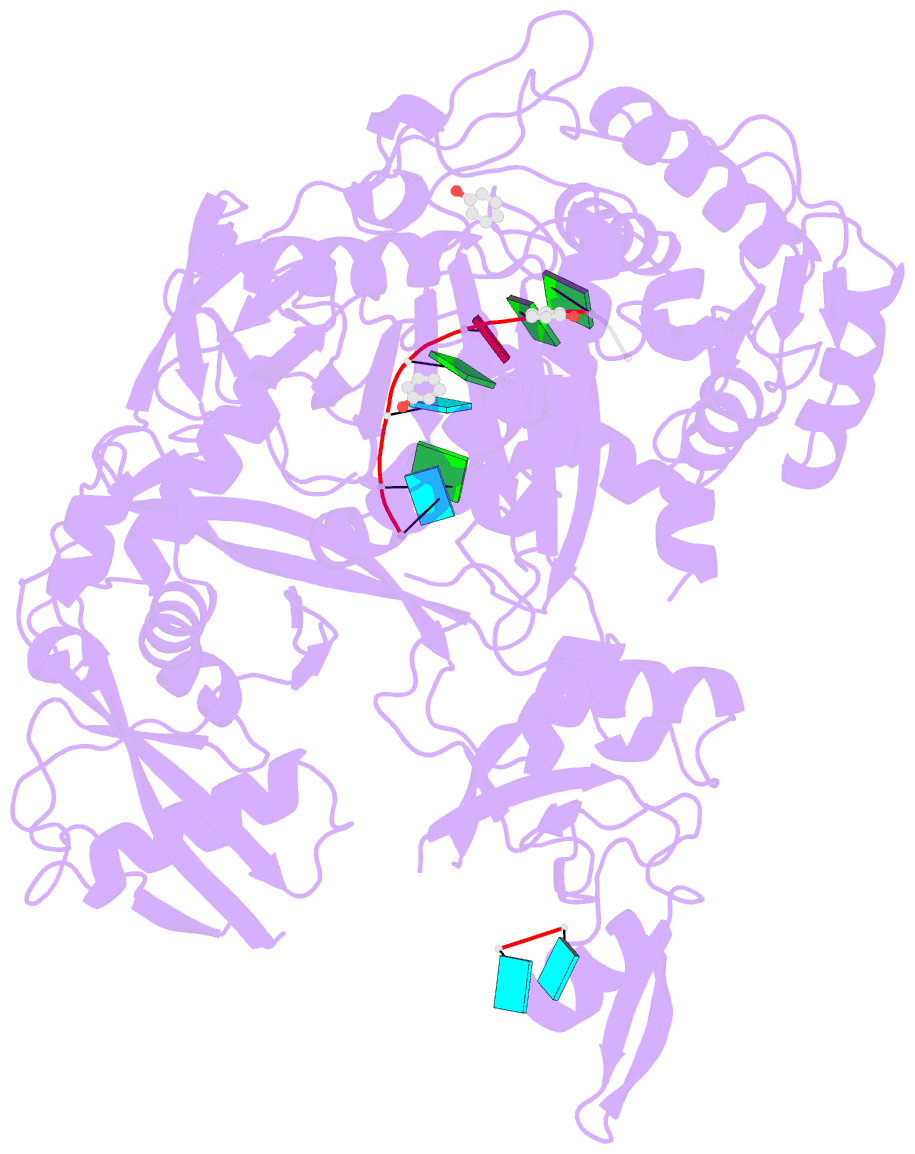Summary information and primary citation
- PDB-id
- 5ki6; SNAP-derived features in text and JSON formats;
DNAproDB
- Class
- hydrolase-RNA
- Method
- X-ray (2.153 Å)
- Summary
- Human argonaute-2 bound to a guide RNA with a nucleobase modification at position 1
- Reference
- Suter SR, Sheu-Gruttadauria J, Schirle NT, Valenzuela R, Ball-Jones AA, Onizuka K, MacRae IJ, Beal PA (2016): "Structure-Guided Control of siRNA Off-Target Effects." J.Am.Chem.Soc., 138, 8667-8669. doi: 10.1021/jacs.6b06137.
- Abstract
- Short interfering RNAs (siRNAs) are promising therapeutics that make use of the RNA interference (RNAi) pathway, but liabilities arising from the native RNA structure necessitate chemical modification for drug development. Advances in the structural characterization of components of the human RNAi pathway have enabled structure-guided optimization of siRNA properties. Here we report the 2.3 Å resolution crystal structure of human Argonaute 2 (hAgo2), a key nuclease in the RNAi pathway, bound to an siRNA guide strand bearing an unnatural triazolyl nucleotide at position 1 (g1). Unlike natural nucleotides, this analogue inserts deeply into hAgo2's central RNA binding cleft and thus is able to modulate pairing between guide and target RNAs. The affinity of the hAgo2-siRNA complex for a seed-only matched target was significantly reduced by the triazolyl modification, while the affinity for a fully matched target was unchanged. In addition, siRNA potency for off-target repression was reduced (4-fold increase in IC50) by the modification, while on-target knockdown was improved (2-fold reduction in IC50). Controlling siRNA on-target versus microRNA (miRNA)-like off-target potency by projection of substituent groups into the hAgo2 central cleft from g1 is a new approach to enhance siRNA selectivity with a strong structural rationale.





